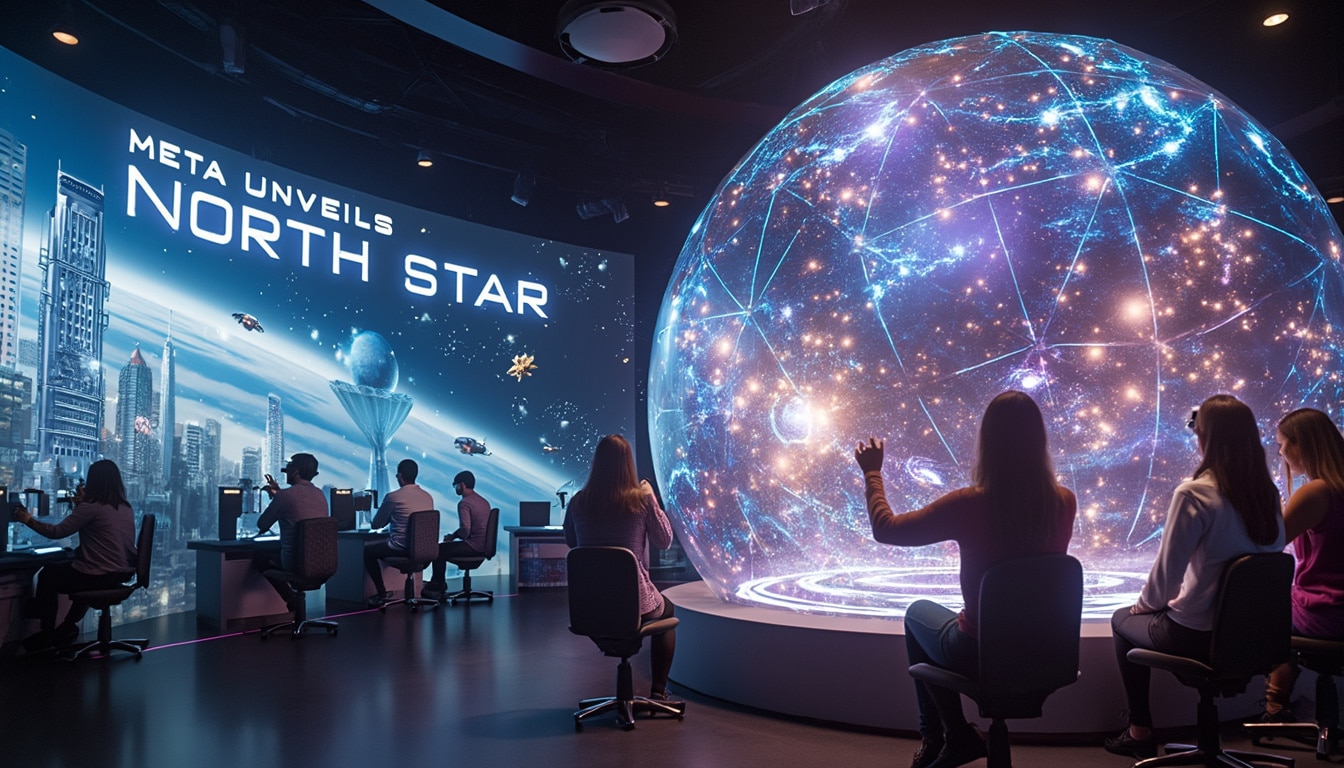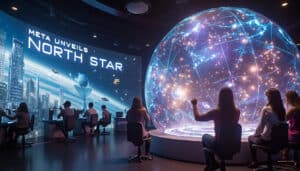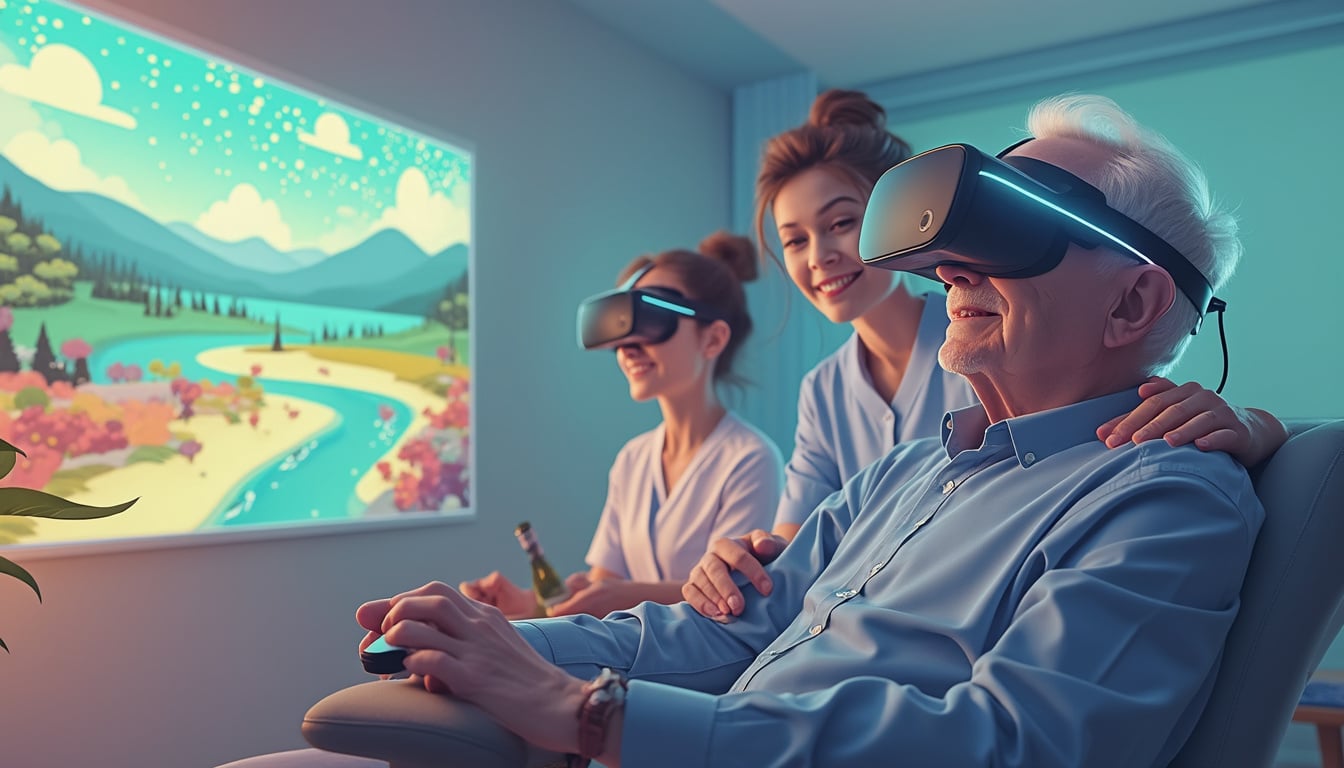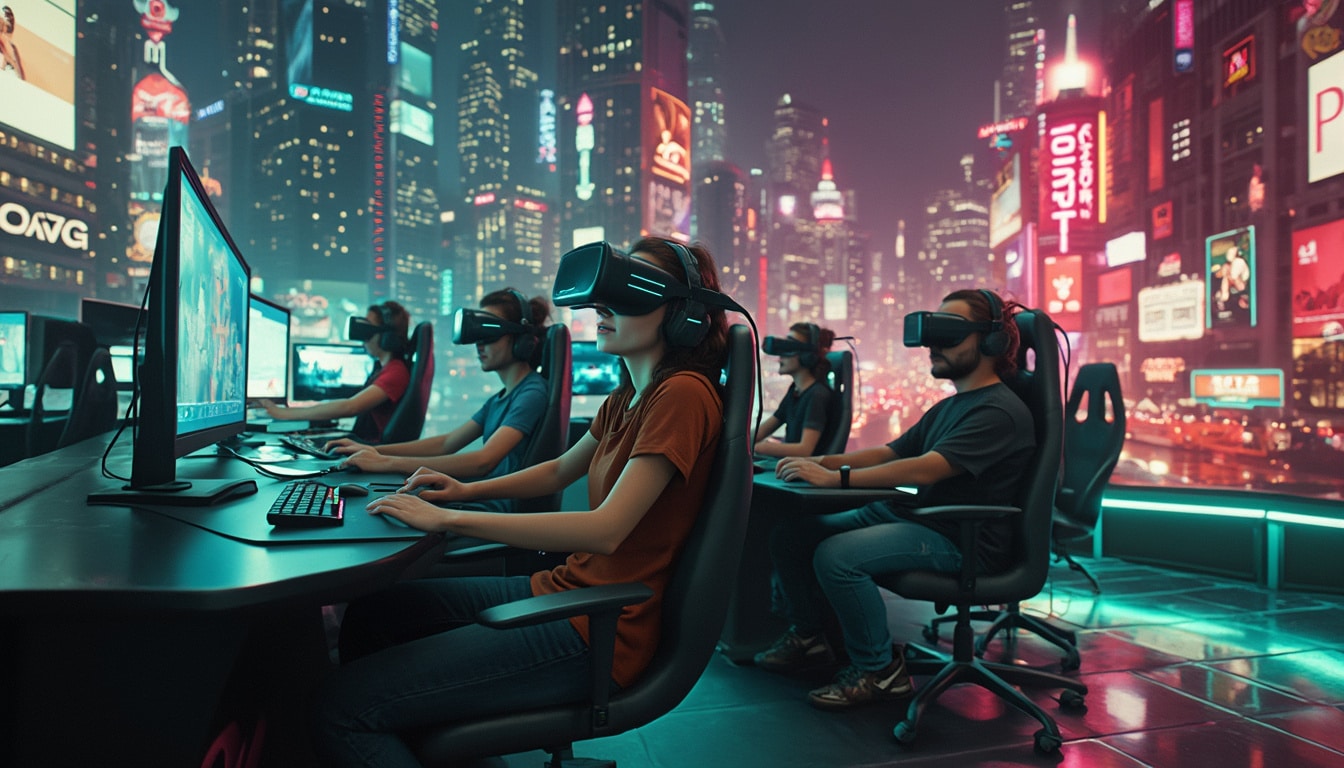« `html
Meta promised a visual slap with its latest virtual reality showcase. Fans eagerly awaited a groundbreaking experience, and the anticipation was palpable. However, the delivery was a mix of technical marvels and unexpected glitches.
Meta introduced North Star as a cutting-edge demonstration for its Quest lineup. This open-source VR game aims to highlight the capabilities of Meta’s development tools, including Application SpaceWarp, the Meta XR Interaction SDK, and the Meta XR Audio SDK. Set in the era of sailing, players assume the role of a mariner caught in the vastness of the ocean. Despite boasting dynamic lighting effects and a convincingly rendered ocean, North Star falls short when compared to titles like Asgard’s Wrath 2 and Assassin’s Creed Nexus. Visual inconsistencies, such as floating feet and image duplications when interacting with objects, suggest a lack of thorough testing. Additionally, Quest 3 users might find the absence of peripheral visual effects jarring, indicating a possible oversight in caterings to different headset configurations. On the bright side, the physical interactions, especially the rope simulations, are impressively detailed, offering a glimpse into the potential of Meta’s VR tools. While North Star isn’t a full-fledged game, its open-source nature makes it a valuable resource for developers eager to push the boundaries of virtual reality.

Meta has recently launched North Star, an ambitious virtual reality (VR) demonstration designed to showcase the capabilities of its Quest lineup. Marketed as a groundbreaking experience with « stunning graphics, » North Star aims to immerse players in a rich, seafaring adventure. However, while the demo boasts some impressive features, it also grapples with technical hiccups that have left both enthusiasts and critics with mixed feelings.
Table of contents
Togglewhat is north star and what does it showcase?
North Star is an open-source VR game developed by Meta as a showcase for its Quest hardware. Available for free on Meta Horizon, this 20-minute experience places players in the role of a sailor stranded at sea during the age of sail. The game’s primary purpose is to highlight Meta’s development tools, including Application SpaceWarp, the Meta XR Interaction SDK, and the Meta XR Audio SDK.
The setting is both captivating and detailed, with dynamic lighting effects and a reasonably realistic ocean that tries to pull players into the maritime ambiance. The narrative-driven experience is intended to push the boundaries of what the Quest can achieve, leveraging open-source elements to allow developers to explore and build upon the foundation Meta has laid.
However, despite these noble intentions, North Star’s execution has sparked debate. While Meta’s promise of « epoustouflant » (breathtaking) graphics sets high expectations, the reality presents a more nuanced picture. Compared to titles like Asgard’s Wrath 2 or Batman: Arkham Shadow, North Star’s visual performance falls short, even without the added benefits of AppSW. This disparity has led to scrutiny regarding Meta’s marketing claims and the actual capabilities demonstrated in the game.
how does north star compare to other vr experiences?
When stacked against other VR titles, North Star’s performance is a mixed bag. Games such as Assassin’s Creed Nexus and other high-profile VR experiences offer superior graphical fidelity and smoother performance, setting a high benchmark for what players can expect in terms of immersion and visual storytelling. These titles manage to deliver rich, detailed environments and fluid interactions without heavily relying on Meta’s proprietary development tools.
North Star, while ambitious, doesn’t quite reach the same level of polish. Critics have pointed out that the overall visual presentation is lacking, even though it features dynamic lighting and a decent ocean rendering. The graphical shortcomings are particularly glaring considering the demo is pitched as a showcase for Meta’s advanced technologies. This has led to questions about whether Meta’s own tools are being fully utilized or if there are limitations that developers need to address.
Moreover, North Star’s graphics have been compared unfavorably to the already impressive performance of GeForce RTX graphics cards, which offer superior rendering capabilities that could potentially enhance the visual aspects of VR experiences. This comparison highlights the gap between Meta’s expectations and the current output of their VR demonstration.
what are the technical highlights and shortcomings of north star?
impressive rope simulation and interactions
One of North Star’s standout features is its simulation of physical interactions, particularly the realistic rope mechanics. Unlike basic interaction systems where ropes might simply swing or stretch, North Star requires players to actively manage the rope by winding and securing it, adding a layer of depth and realism rarely seen in VR experiences. This level of detail extends to other elements of the game, such as the boat’s levers, cranks, and helm, which are meticulously designed to respond realistically to player input.
This sophisticated interaction system not only enhances immersion but also serves as a valuable resource for developers looking to build complex VR interactions. The use of Meta XR Interaction SDK is evident in these features, providing a robust framework for creating intricate, responsive environments. For those interested in accessing artificial intelligence for free, North Star’s open-source nature, available on GitHub (excluding original voiceovers), offers a treasure trove of examples and code that can be leveraged in future projects.
visual glitches and performance issues
Despite these technical achievements, North Star is not without its flaws. Users have reported several visual bugs that detract from the overall experience. Notable issues include the duplication of the player’s body image when holding objects, significant frame rate drops when using tools like telescopes, and shader loading errors. Perhaps the most noticeable problem is with the avatar’s feet, which often freeze or deform, breaking the illusion of being a seafaring sailor.
These glitches suggest that the demo may not have undergone thorough testing, particularly in dynamic or movement-heavy scenarios. Additionally, Quest 3 users have noted the absence of visual effects at the edges of their field of view, a limitation likely tied to settings optimized for earlier Quest models with narrower lenses. This oversight undermines Meta’s goal of showcasing the Quest’s full potential, as it masks the headset’s true visual capabilities.
Such technical shortcomings can hinder the adoption of Meta’s development tools, as potential users may question the stability and performance of applications built on these platforms. For more insights into optimizing VR experiences, developers might find resources like evaluating the coding capabilities of the Gemini 2.5 Pro update useful in understanding best practices and performance optimization techniques.
what does north star mean for vr developers?
North Star serves as both an inspiration and a cautionary tale for VR developers. On one hand, its open-source nature and the complexity of its interaction systems provide a valuable learning tool. Developers can dissect the code, understand the implementation of advanced features, and build upon Meta’s framework to create their own immersive experiences. This aligns with Meta’s broader strategy of fostering a developer-friendly ecosystem, encouraging innovation and experimentation within the VR community.
On the other hand, the demo’s technical issues highlight the challenges that come with leveraging cutting-edge tools. Stability and performance are critical factors in user satisfaction, and any shortcomings in these areas can lead to frustration and a lack of confidence in the platform. For developers, this underscores the importance of rigorous testing and optimization, especially when utilizing new or complex SDKs. Additionally, it emphasizes the need for flexibility in development, as hardcoding options without accounting for a diverse range of hardware configurations can result in an inconsistent user experience.
Moreover, North Star’s mixed reception points to the necessity of balancing ambition with practicality. While showcasing advanced features is important, ensuring that these features function smoothly is equally crucial. Developers can take this lesson to heart by prioritizing both innovation and usability in their projects, aiming to deliver experiences that are not only feature-rich but also reliable and user-friendly.
For those interested in pushing the boundaries of VR, resources like Meta’s call for projects to enhance innovation in local startups can provide opportunities to collaborate, learn, and contribute to the evolving landscape of virtual reality.
where to access north star and future prospects
Interested developers and VR enthusiasts can access North Star for free on Meta Horizon. Available as an open-source project on GitHub—with the exception of the original voiceovers—it offers a hands-on opportunity to explore Meta’s latest VR technologies and interact with a sophisticated, albeit imperfect, VR environment.
Looking ahead, North Star is expected to serve as a foundation for future developments in Meta’s VR ecosystem. By providing a robust example of what can be achieved with their tools, Meta hopes to inspire a new wave of VR content that pushes the envelope in terms of interactivity and realism. As developers continue to experiment and iterate on this base, we can anticipate a diverse array of applications that leverage Meta XR Interaction SDK and other proprietary tools to create more seamless and engaging virtual experiences.
Additionally, the feedback and lessons learned from North Star’s rollout will likely inform Meta’s future updates and tool enhancements, aiming to address the current shortcomings and better support the developer community. For those keen on staying ahead in the VR space, keeping an eye on Meta’s ongoing developments and exploring related topics like coding capabilities in the Gemini updates will be essential.
In conclusion, while North Star may not fully live up to its dazzling promise, it undeniably marks a significant step in Meta’s journey to advance virtual reality. By embracing both its strengths and weaknesses, Meta can continue to refine its offerings, ultimately leading to more polished and immersive VR experiences for users and developers alike.












